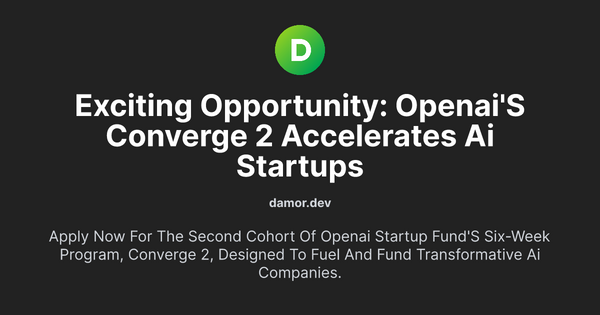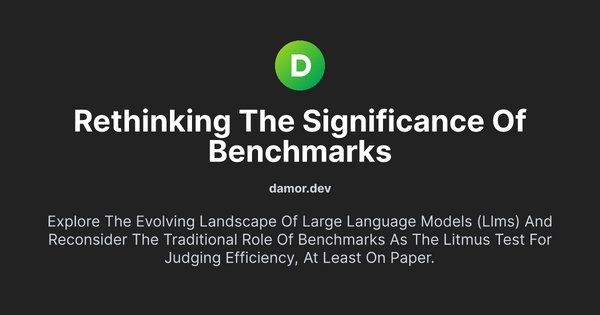Why We Need to Rethink Artificial Intelligence: Navigating the Digital Landscape in 2023

Introduction
In 2023, we find ourselves in a digital landscape vastly different from what we had once imagined. The promise of the Internet as a revolutionary force has taken a precarious turn, and the advent of Artificial Intelligence (AI) looms large in shaping the destiny of our digital spaces. This essay will delve into the complexities and concerns surrounding AI and its impact on the digital realm.
I. AI: More Hype Than Science
AI is everywhere in 2023, from our messaging apps to smartphone cameras and even our soda cans. But is this widespread integration truly a product of scientific advancement or merely a marketing ploy? To understand the current state of AI, it's essential to appreciate that AI research has been ongoing since the 20th century. Many applications of AI have existed for decades, quietly working in the background, often without users being aware of it.
One of the fundamental questions we must ask is whether we, as users, ever actively sought AI's integration into our lives. Companies are rushing to implement AI features, even when they are unnecessary, sometimes to the detriment of user-friendliness. In some cases, this integration is accompanied by a surge in advertisements, turning platforms that were once celebrated for their user-friendly interfaces into frustrating experiences. For example, Netflix's recent crackdown on password sharing raises concerns about inconveniencing users for financial gain.
II. The "Enshittification" of User-Friendly Platforms
Renowned technology scholar Cory Doctorow has aptly coined the term "enshittification" to describe a trend where products that initially boast user-friendliness eventually degrade over time. This phenomenon is deeply concerning, as it erodes the positive user experience that these platforms once provided, often under the guise of innovation and improvement.
III. Social Media: The Experiment on the Masses
Social media platforms have turned their users into unwitting experimental subjects. The addictive design elements of these platforms, inspired by the work of B.F. Skinner, constantly bombard users with manipulative notifications, like buttons, and follow features. These mechanisms prioritize the generation of attention and "engagement" at the expense of meaningful, nuanced content. Most of what populates our algorithmically generated feeds is, in fact, covert advertising.
The pervasive use of the "infinite scroll" feature, where content never seems to end, should have been an early warning sign of the harmful effects of social media. This design element, initially introduced to keep users engaged, has now evolved into the era of "short videos." This format, popularized by TikTok and quickly adopted by platforms like Instagram, Facebook, and YouTube, is explicitly designed to create an unending stream of audio-visual content, most of which is "suggested for you." However, the content is often random, bite-sized, and decontextualized, leading to a formless, shapeless, and potentially destructive impact on our attention spans.
Individually, these short videos may be amusing or captivating, but collectively, they create a content stream that is relentless, often leading to an attention-span meltdown. With the digital landscape already in disarray, the influx of AI-generated "content" threatens to exacerbate this issue. The promise of "generative" AI could, paradoxically, result in "degenerative" consequences for human critical thinking capabilities.
IV. The Ethical Implications of AI Leadership
Looking beyond the technical aspects of AI, it's crucial to examine the statements and values expressed by those who are fervently promoting AI integration in various fields. For instance, the CEO of OpenAI has publicly expressed his aspirations to develop AI that can replace the "median human," a term with degrading implications for what we commonly refer to as the "average human." Such a mission statement should raise significant concerns, particularly in terms of its potential impact on employment.
Furthermore, the same CEO has mentioned the use of AI in providing healthcare services to those who can't afford them. This proposal, which suggests using chatbots to replace actual healthcare services for underserved communities, has drawn widespread criticism for its insensitivity and ignorance regarding the healthcare needs of the less privileged.
V. The Humanization of AI: A Longstanding Dream
In the world of AI, one fascinating development is the humanization of AI. Users have likened their interactions with AI, such as ChatGPT, to a form of therapy. These discussions harken back to the 1960s when early chatbots like ELIZA first captivated users with their ability to engage in conversations.
VI. Broader Implications of AI
While the issues mentioned so far are substantial, they represent only a fraction of the concerns surrounding AI. Pioneering tech scholars like Kate Crawford have documented a litany of problems. These include the environmental consequences of the massive amount of water and electricity consumed by AI systems. In an era where climate change is an imminent threat, such resource consumption raises significant concerns.
Moreover, AI's heavy reliance on extensive datasets poses issues. These datasets often contain inherent biases, which can result in problematic outputs. The creation and curation of these datasets involve political choices regarding classification and categorization, potentially reinforcing existing societal biases.
Additionally, there are individuals who work behind the scenes to "clean" AI of violent and hateful content on the internet to make systems like ChatGPT appear "friendly." The emotional toll on those responsible for this content moderation is a hidden cost of AI.
Furthermore, AI often scrapes the works of writers and artists to build datasets without their consent, raising ethical questions about intellectual property rights and consent.
VII. Real AI Threats vs. "Killer Robots"
The fear of "killer robots" dominating society is more of a fantasy scenario, serving as a distraction from the very real and tangible harms outlined above. Instead of envisioning AI as an existential threat, it's more pertinent to view it as a force likely to amplify existing societal fault lines across multiple levels.
VIII. The Troubling State of Tech Platforms
Tech platforms have their own set of challenges. Google Search results have, at times, presented incorrect AI-generated answers as genuine search results, potentially misguiding millions of users. The advent of advanced AI media generators raises concerns about the proliferation of convincing fake videos featuring realistic faces and voices. The potential implications of such deepfakes for the credibility of digital content are deeply disconcerting, particularly with the potential to sway real-world political discourse.
Conclusion
The current state of technology, social media, and the internet as a whole raises critical questions. We must contemplate the sustainability of our current trajectory of technological development. Can we advocate for a more democratic approach to AI integration? Are we willing to abandon problematic platforms in favor of those aligned with our values? To truly navigate the impact of AI on our thoughts, ideas, and cultures on a global scale, we must engage with these questions.
Perhaps the AI era is a turning point. At a time when everything may appear doomed, our collective awakening and active engagement with these issues might just lead to the evolution of human intelligence in the face of artificial intelligence. By actively questioning, critiquing, and rejecting AI features and practices that do not align with our values, we can shape a future where technology serves humanity rather than subverts it.


![[Solved] ZlibError:zlib:
unexpected end of file - payload](/content/images/size/w600/2024/02/Screenshot-2024-02-18-143905.png)


